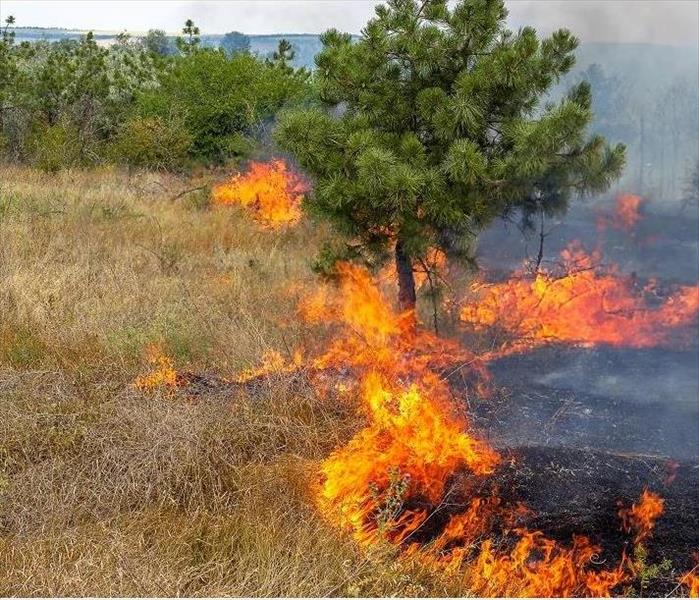How Wildfires Can Cause Increased Flooding Damage
7/19/2022 (Permalink)
If a fire occurs in or near your Salt Lake City, UT, home, you may think the worst is over once the flames are extinguished. Yet that is not the case. Fires can lead to flooding, as well. After a fire, your home will likely have holes in the roof and walls. Water from a storm could enter your house through these holes. Even if your home itself was not affected by a fire, a wildfire near your property could make it more susceptible to flooding damage.
Wildfire Damage and Floods
When wildfires burn through the terrain, they destroy vegetation that typically absorbs rainfall. As a result, the ground is left:
- Barren
- Unable to absorb water
- Charred
It can take up to five years for vegetation to re-grow after a wildfire. Until then, the areas surrounding the damage will be more at risk for flash floods. The rainwater from storms may also pick up sediment and soil as it moves across the charred ground. This could lead to harmful mudflows.
Unfortunately, most homeowners’ insurance policies do not include flood coverage. If your house floods, even if the flood results from a wildfire out of your control, you could be responsible for the full cost of professional restoration services.
This flood cleanup can be quite expensive, as well. In 2010, an average flood claim cost $28,000. In fact, just 1 inch of water in your home can lead to $25,000 worth of damage.
Thankfully, you can purchase separate flood coverage via the FEMA NFIP. The National Flood Insurance Program offers insurance to both renters and homeowners.
Getting Flood Coverage
If you live in one of the 23,000 participating communities, you are eligible for the NFIP. In fact, if you live in a high-risk area and have a mortgage from a government-backed lender, you are legally required to obtain flood coverage. Your insurance agent can help you purchase a flood policy through the NFIP. There may be a 30-day waiting period before the coverage goes into effect.
The cost of this coverage varies based on your property’s flood risk. If you want to lower your premiums, you can enact flood mitigation measures. For instance, you can elevate your utilities and fill in your crawlspace or basement.
Other Steps To Take Before the Next Flood
Once you have purchased flood insurance from the FEMA NFIP, you should take additional steps to prepare your home and family for the next major storm. Gather all necessary supplies so you will not have to drive to the store in the middle of a storm.
You should also keep an inventory of the various items in your home. This will be important information for the insurance adjuster. Any important documents, such as birth certificates, should be kept in a waterproof location.
In extreme situations, you may be asked to evacuate your house ahead of the storm. Plan a safe evacuation route, and make sure that everyone in your home understands it.
Thanks to the FEMA NFIP, you can purchase insurance that covers the cost of restoration after a flood. This is particularly important if you live in a community prone to wildfires.





 24/7 Emergency Service
24/7 Emergency Service
